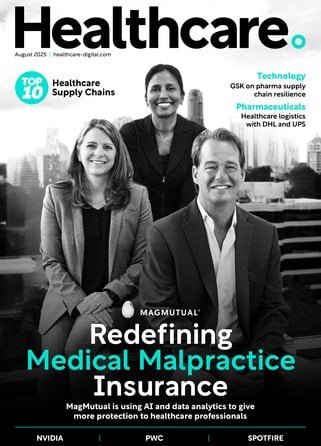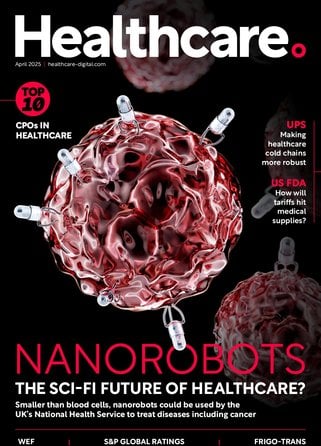Infor: How Can Hospitals Use AI as a Demand Trend Tool?

Kevin Samuelson, CEO of cloud technology company Infor sat down with Healthcare Digital to share how AI is being used in hospitals as a demand trend tool, and shares some real-life examples.
Hello Kevin, please introduce yourself and your role. What led you to this role?
I’m Kevin Samuelson, CEO at Infor, the industry cloud company. I have more than 20 years of experience in technology, finance, operations and M&A to lead the company.
I originally joined Infor at its inception in 2002 as Senior Vice President of M&A. I led more than 40 acquisitions that helped shape Infor’s industry-cloud focused go-to-market strategy, growing the company from US$30m to nearly US$3b in annual revenue over 11 years. Prior to getting appointed as CEO in 2019, I served as the CFO of Infor. I led global finance, accounting, treasury, tax, IT and M&A teams of more than 1,000 employees across all major geographies as the CFO.
I left Infor in 2013 before returning as CFO in 2016 to get a feel for startups while working at two high-growth companies. I also worked in equity research for Robertson Stephens and NationsBank’s Montgomery Securities before joining Infor in 2002.
How can AI be used within hospitals to understand demand trends?
Hospitals can use AI to better understand demand trends and manage staffing and inventory. By embracing AI-driven solutions, we are not only streamlining operations but propelling the care and outcomes of patient treatments to unprecedented heights. The journey ahead is nothing short of phenomenal, and as we pioneer this transformative frontier, the future of healthcare promises to be a testament to the limitless possibilities that cutting-edge technology can bring to our industry.
How can this guarantee the right materials get to the right hospital departments at the right time?
Using AI within hospitals can help optimise supply chain management, which is the process of planning, sourcing, delivering, and managing the resources needed for healthcare services. AI can enable data-driven decisions and automate tasks that are otherwise time-consuming, error-prone, inefficient, and costly.
One example of this is with Demand Forecasting- AI algorithms analyse historical data on patient volume, procedures, diagnoses and more to predict future demand for supplies and equipment. This analysis helps hospitals avoid shortages, or surpluses, or to switch to alternative supplies earlier if a shortage is predicted within the healthcare organisation.
A second example is with Supply chain optimisation: AI algorithms are able to analyse data on inventory, purchasing, and delivery to identify opportunities to streamline processes, reduce costs, and improve efficiency. AI algorithms analyse thousands of data points to find the best suppliers, negotiate the best prices, and monitor the quality of the product.
Why does it matter: Without margin, there’s no mission.
Can you give us some real-world examples of how AI analysis of staffing and inventory improves patient care?
Witnessing how AI can not only optimise healthcare efficiency but also unlock unprecedented innovation through unconventional creativity is truly awe-inspiring. A few examples of real-world impact would be:
- (Clinical science+) Staffing to patient demand & making equitable assignments: AI analyses historical data, admission rates, and clinical trends and provides insights into peak staffing demand times, enabling hospitals to plan and adjust staffing levels, ensuring optimal nurse-to-patient ratios. No two patients are alike when it comes to their care protocols, with some needing minimal monitoring and assistance, and others requiring 24/7, 1-on-1 care. AI considers individual patient workloads to create more equitable nurse to patient assignments thus reducing staff burnout, promoting employee well-being and satisfaction, and improving patient experience.
- Enhanced medication management: AI can track medication usage patterns, identify potential shortages, and suggest alternative options. This proactive approach ensures that patients receive timely and appropriate medications, contributing to better treatment outcomes.
- Improved surgical planning: AI can assist in predicting surgical demand and optimising surgeon schedules with the limited operating rooms available. This not only reduces the likelihood of scheduling conflicts but also ensures that surgical teams are adequately prepared for complex procedures, ultimately improving patient safety.
- (Population health) Patient-centric care planning: AI-driven insights into patient data, including demographics and medical history, aid in creating personalised care plans. This results in more effective and patient-centric healthcare delivery, addressing individual needs and preferences.
**************
Make sure you check out the latest industry news and insights at Healthcare Digital and also sign up to our global conference series - Tech & AI LIVE 2024
**************
Healthcare Digital is a BizClik brand
*************




